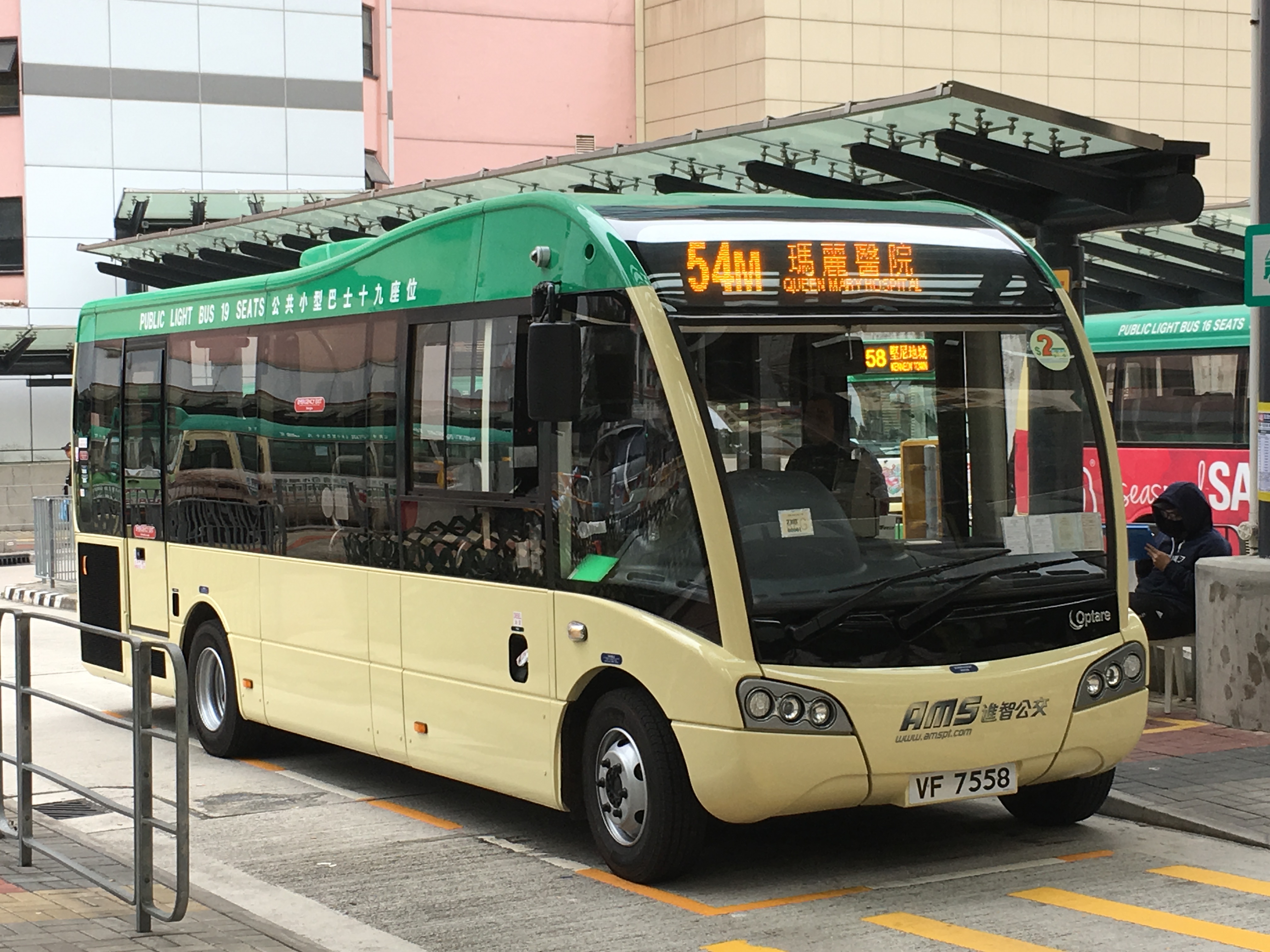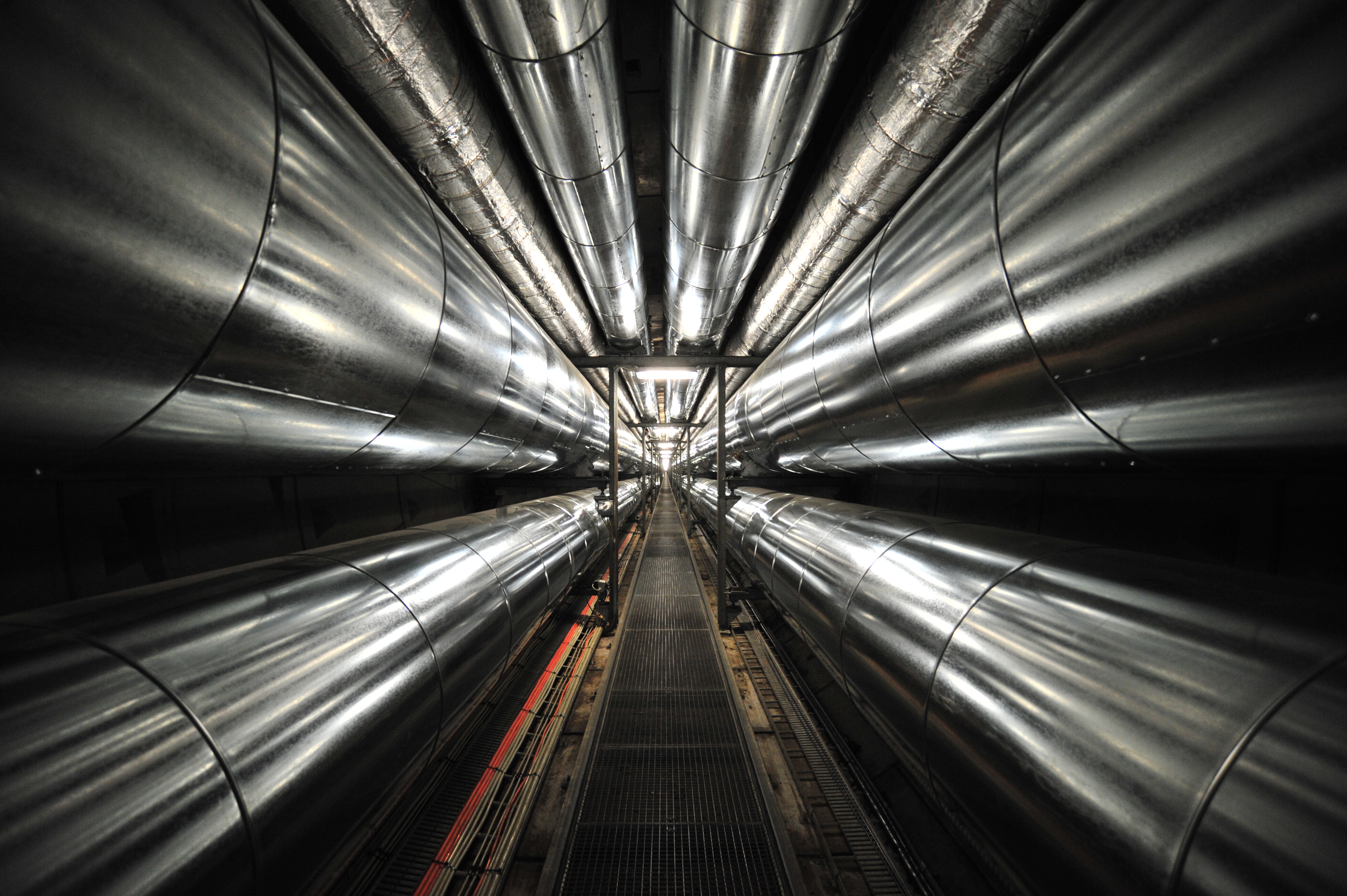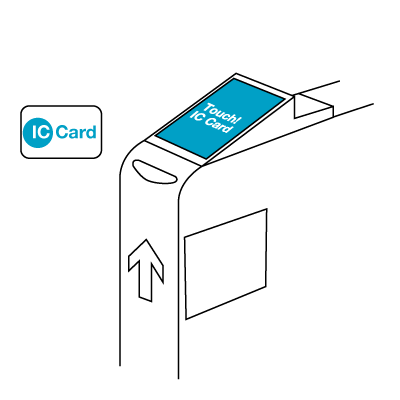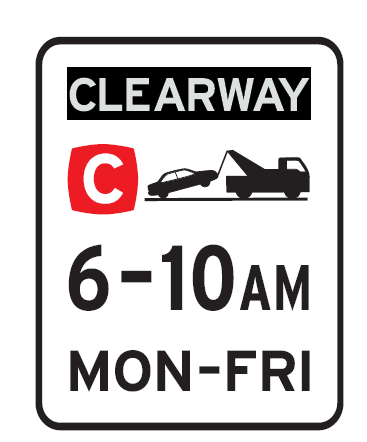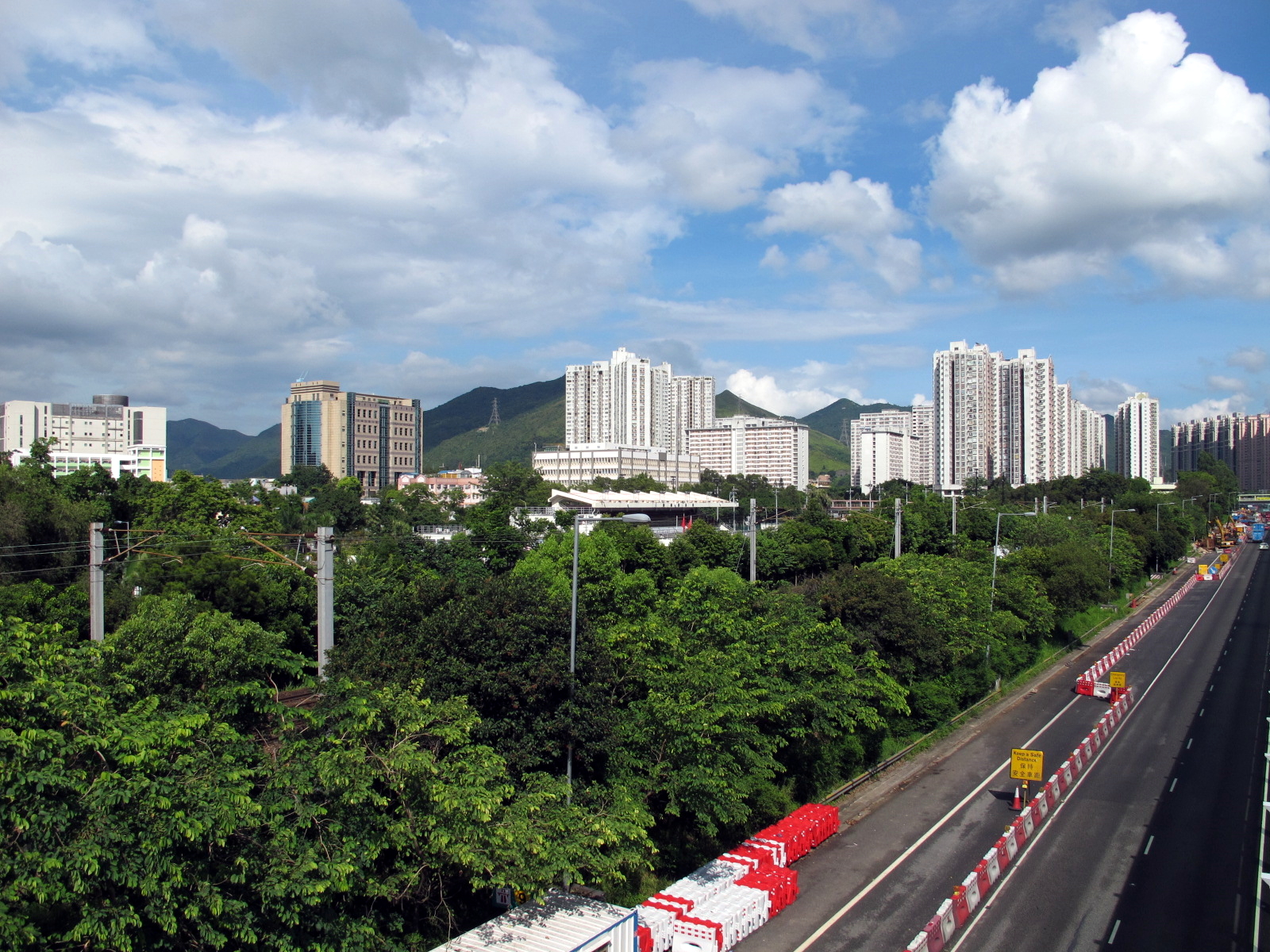|
Public Light Bus
The public light bus (PLB) or minibus is a public transport service in Hong Kong. It uses minibuses to provide quicker transport and to serve areas that standard Hong Kong bus lines cannot reach as efficiently. The vehicles are colloquially known by the loanword ' (). Depending on the type of vehicle, minibuses carry a maximum of 16 or 19 seated passengers; no standing passengers are allowed. Minibuses typically offer a faster and more efficient transportation solution due to their small size, limited carrying capacity, frequency and diverse range of routes, although their fares are generally slightly higher than those of standard buses. The popularity of minibus services in Hong Kong can be attributed to Hong Kong's high population density, as well as the ability of the minibuses to navigate narrow and winding roads which standard buses cannot. Overview Minibuses in Hong Kong are licensed either as green minibuses (GMBs) or red minibuses (RMBs), the former restricted to fix ... [...More Info...] [...Related Items...] OR: [Wikipedia] [Google] [Baidu] |
Tram
A tram (also known as a streetcar or trolley in Canada and the United States) is an urban rail transit in which Rolling stock, vehicles, whether individual railcars or multiple-unit trains, run on tramway tracks on urban public streets; some include segments on segregated Right-of-way (property access), right-of-way. The tramlines or tram networks operated as public transport are called tramways or simply trams/streetcars. Because of their close similarities, trams are commonly included in the wider term ''light rail'', which also includes systems separated from other traffic. Tram vehicles are usually lighter and shorter than Main line (railway), main line and rapid transit trains. Most trams use electrical power, usually fed by a Pantograph (transport), pantograph sliding on an overhead line; older systems may use a trolley pole or a bow collector. In some cases, a contact shoe on a third rail is used. If necessary, they may have dual power systems—electricity in city stre ... [...More Info...] [...Related Items...] OR: [Wikipedia] [Google] [Baidu] |
Bridge
A bridge is a structure built to Span (engineering), span a physical obstacle (such as a body of water, valley, road, or railway) without blocking the path underneath. It is constructed for the purpose of providing passage over the obstacle, which is usually something that is otherwise difficult or impossible to cross. There are many different designs of bridges, each serving a particular purpose and applicable to different situations. Designs of bridges vary depending on factors such as the function of the bridge, the nature of the terrain where the bridge is constructed and anchored, the material used to make it, and the funds available to build it. The earliest bridges were likely made with fallen trees and stepping stones. The Neolithic people built boardwalk bridges across marshland. The Arkadiko Bridge, dating from the 13th century BC, in the Peloponnese is one of the oldest arch bridges in existence and use. Etymology The ''Oxford English Dictionary'' traces the origin of ... [...More Info...] [...Related Items...] OR: [Wikipedia] [Google] [Baidu] |
Tunnel
A tunnel is an underground or undersea passageway. It is dug through surrounding soil, earth or rock, or laid under water, and is usually completely enclosed except for the two portals common at each end, though there may be access and ventilation openings at various points along the length. A pipeline differs significantly from a tunnel, though some recent tunnels have used immersed tube construction techniques rather than traditional tunnel boring methods. A tunnel may be for foot or vehicular road traffic, for rail traffic, or for a canal. The central portions of a rapid transit network are usually in the tunnel. Some tunnels are used as sewers or aqueducts to supply water for consumption or for hydroelectric stations. Utility tunnels are used for routing steam, chilled water, electrical power or telecommunication cables, as well as connecting buildings for convenient passage of people and equipment.Salazar, Waneta. ''Tunnels in Civil Engineering''. Delhi, India : Wh ... [...More Info...] [...Related Items...] OR: [Wikipedia] [Google] [Baidu] |
Octopus Card
The Octopus card ( zh, t=, j=baat3 daat6 tung1, is a reusable Contactless payment, contactless stored value smart card for making Electronic money, electronic payments in online or offline systems in Hong Kong. Launched in September 1997 to collect fares for the territory's public transport system, it has grown into a widely used system for transport and other retail transactions in Hong Kong. It is also used for purposes such as recording school attendance and permitting building access. The cards are used by 98 percent of the population of Hong Kong aged 15 to 64 and the system handles more than 15 million transactions, worth over HK$220 million, every day. The Octopus card system was the world's second contactless smart card system, after the Korean Upass. It won the Chairman's Award at the World Information Technology and Services Alliance's 2006 Global IT Excellence Awards for, among other things, being the world's leading complex automatic fare collection and contactle ... [...More Info...] [...Related Items...] OR: [Wikipedia] [Google] [Baidu] |
Clearway
The term clearway is used in several Commonwealth countries to refer to stretches of road or street where parking is prohibited. Australia In Australia, a clearway is a special road upon which only taxis and buses may stop at the kerb on certain times of the day. Any other vehicle which stands at the kerb may be towed away (unless there is some form of emergency). Clearways are used on congested roads where there is no room for additional traffic lanes. Clearways aim to improve traffic flow at certain times of the day by prohibiting stopping in the lane next to the kerb, adding another lane to the roadway (when used on both sides of the road, two are added). In New South Wales clearways are indicated by a yellow broken line at the kerb and "clearway" signage (which indicates the times of the day upon which the clearway operates). In Perth, Western Australia, clearways operate between 7:30 and 9:00 am, and from 4:15 to 6:00 pm on weekdays. Parking meters do not accept payment ... [...More Info...] [...Related Items...] OR: [Wikipedia] [Google] [Baidu] |
Landmarks
A landmark is a recognizable natural or artificial feature used for navigation, a feature that stands out from its near environment and is often visible from long distances. In modern-day use, the term can also be applied to smaller structures or features that have become local or national symbols. Etymology In Old English, the word ''landmearc'' (from ''land'' + ''mearc'' (mark)) was used to describe a boundary marker, an "object set up to mark the boundaries of a kingdom, estate, etc." Starting around 1560, this interpretation of "landmark" was replaced by a more general one. A landmark became a "conspicuous object in a landscape". A ''landmark'' literally meant a geographic feature used by explorers and others to find their way back to their departure point, or through an area. For example, Table Mountain near Cape Town, South Africa, was used as a landmark to help sailors navigate around the southern tip of Africa during the Age of Exploration. Artificial structures are ... [...More Info...] [...Related Items...] OR: [Wikipedia] [Google] [Baidu] |
Bus Stop
A bus stop is a place where Public transport bus service, buses stop for passengers to get on and off the bus. The construction of bus stops tends to reflect the level of usage, where stops at busy locations may have shelter (building), shelters, seating, and possibly Passenger information system, electronic passenger information systems; less busy stops may use a simple pole and flag to mark the location. Bus stops are, in some locations, clustered together into transport hubs allowing interchange between routes from nearby stops and with other public transport modes to maximise convenience. Types of service For operational purposes, there are three main kinds of stops: Scheduled stops, at which the bus should stop irrespective of demand; Request stop#Bus transport, request stops (or flag stop), at which the vehicle will stop only on request; and hail and ride stops, at which a vehicle will stop anywhere along the designated section of road on request. Certain stops may be ... [...More Info...] [...Related Items...] OR: [Wikipedia] [Google] [Baidu] |
Hail And Ride
In public transport in the United Kingdom and Australia, hail and ride is boarding or wikt:alighting, alighting a mode of public transport by signalling the driver or Conductor (transportation), conductor that one wishes to board or alight, rather than the more conventional system of using a designated stop. Hail and ride is used primarily in bus transport. The act of requesting a hackney carriage to stop is also termed 'wikt:hailing, hailing'. In bus transport, sections of a route may or may not have regular bus stops, but the bus can be requested to stop anywhere that it is safe to do so, whether there is a bus shelter or not. This is different from the transit bus practice employed in some areas, whereby although a stop may exist, it may be a request stop where the bus is not required to stop unless the passenger indicates they wish to catch the bus, for instance by holding out their arm at the stop, or indicates they wish to get off, for example by pressing a button to ring the ... [...More Info...] [...Related Items...] OR: [Wikipedia] [Google] [Baidu] |
Fanling
Fanling ( zh, t=粉嶺; also spelled Fan Ling or Fan Leng) is a town in the New Territories East of Hong Kong. Administratively, it is part of the North District. Fanling Town is the main settlement of the Fanling area. The name Fanling is a shortened form of Fan Pik Leng (). The area has several public and private estates. Northwest of Fanling is Sheung Shui and southeast is Tai Po. Areas Part of Fanling–Sheung Shui New Town, Fanling Town includes Luen Wo Hui (), the marketplace of Fanling before urban development in the area, and Wo Hop Shek (), where an uphill public cemetery is located. Fanling North is one of three new development areas currently being planned for North District, in parallel with Ta Kwu Ling and Kwu Tung North. Sights * Fanling Wai (), a walled village. * Fung Ying Seen Koon (), a Taoist temple. * Lung Yeuk Tau Heritage Trail * Tao Heung Foods of Mankind Museum (relocated to Fo Tan in 2008) Housing estates Public and private housing e ... [...More Info...] [...Related Items...] OR: [Wikipedia] [Google] [Baidu] |
Sheung Shui
Sheung Shui (, literally "Above-water") is an area in the New Territories, Hong Kong. Sheung Shui Town, a part of this area, is part of the Fanling–Sheung Shui New Town in the North District, Hong Kong, North District of Hong Kong. Fanling Town is to its southeast. History Shek Wu Hui () used to be the marketplace of the Sheung Shui area, before the development of Sheung Shui Town. Bounded by Lung Sum Avenue (), San Fung Avenue and Jockey Club Road, it was the main market in the Sheung Shui area from the 1930s onwards. Today some private residences can be found towering over the old flats in the ''hui'' (market). The majority of the buildings still standing were repaired in the 1950s. Sheung Shui Wai (), originally lived in by the Liao (surname), Liu () clan, is a walled villages of Hong Kong, walled village. The ancestral hall Liu Man Shek Tong () in the village is one of the declared monuments of Hong Kong. The , located near Sheung Shui Wai and originally established ... [...More Info...] [...Related Items...] OR: [Wikipedia] [Google] [Baidu] |
